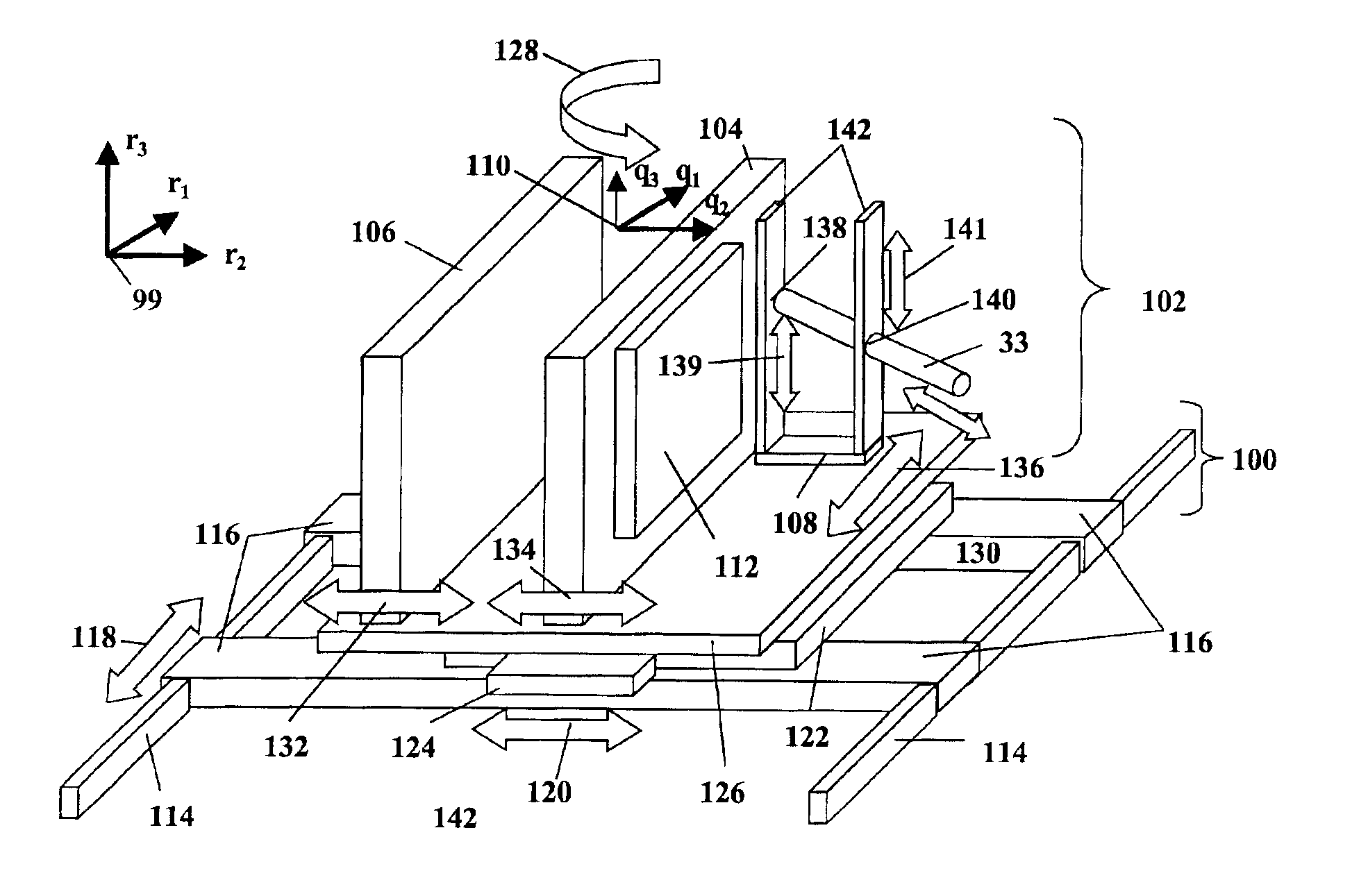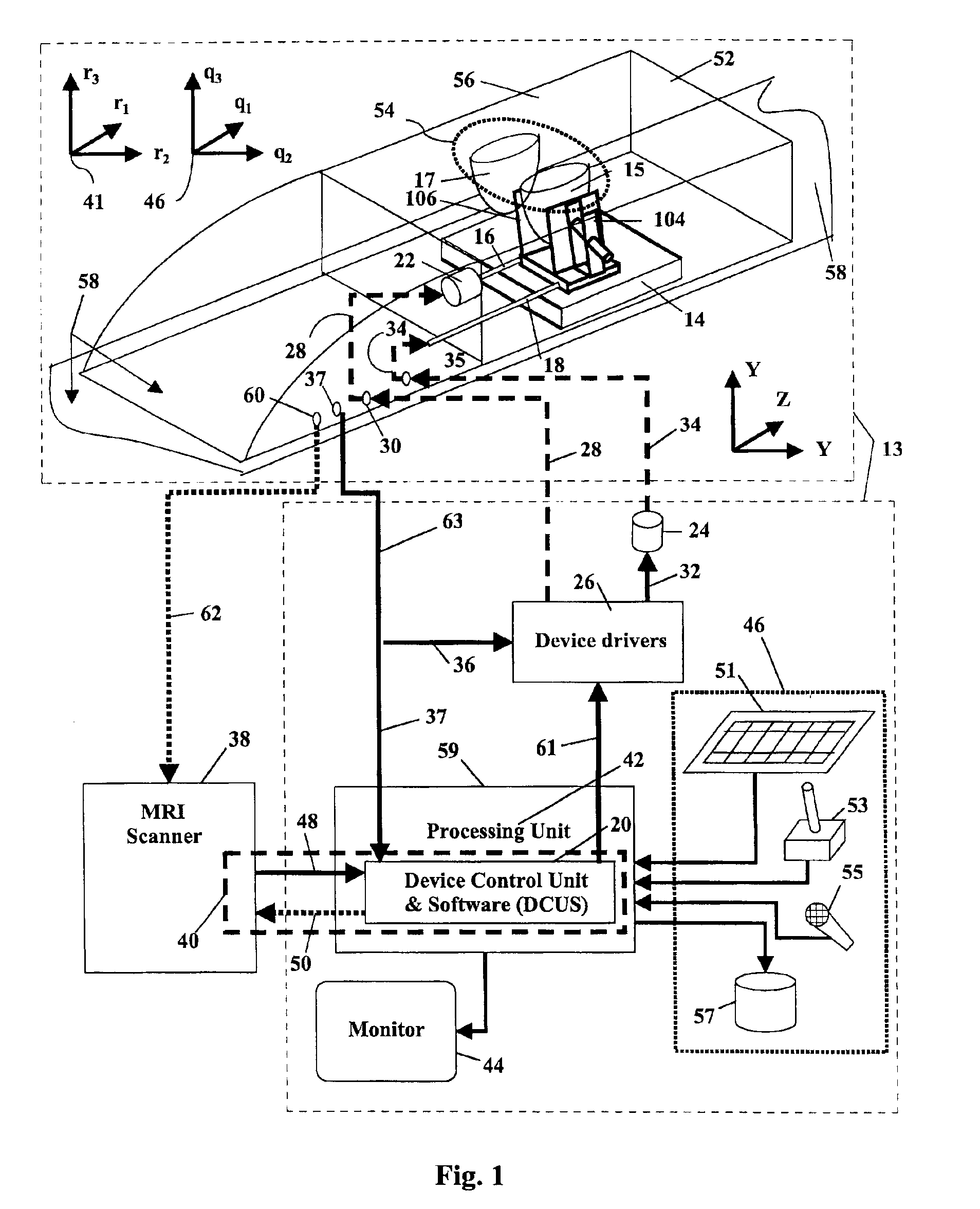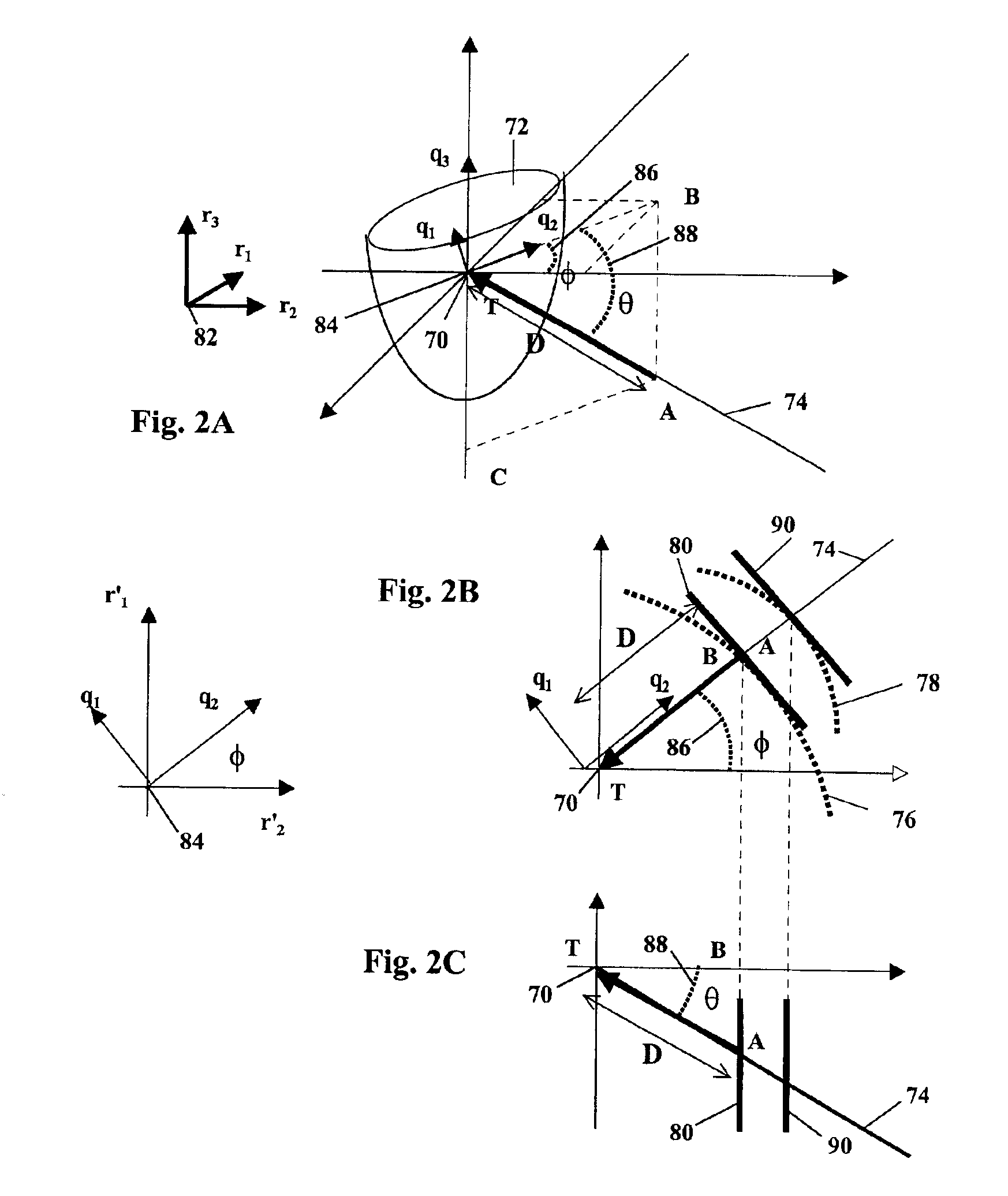System for MRI-guided interventional mammary procedures
a technology of interventional procedures and magnetic resonance imaging, applied in the field of magnetic resonance imaging-guided interventional procedures, can solve the problems of inconvenient limited design of devices, and inability to provide compression along a specific orientation, and achieve accurate positioning and monitoring of interventional procedures, enhance the efficacy and efficiency of breast intervention, and enhance the effect of magnetic resonance imaging
- Summary
- Abstract
- Description
- Claims
- Application Information
AI Technical Summary
Benefits of technology
Problems solved by technology
Method used
Image
Examples
Embodiment Construction
[0045]The general methodology of practice of the process in the present invention comprises injecting a contrast agent into the patient at a position of injection that will enable the contrast agent to spread within tissues of the breast; allowing the contrast agent to spread into the tissues of the breast to reach at least a predetermined level of contrast; then condition the breast to restrict the flow of blood into and out of the breast to increase the persistence of the contrast agent within the breast. When that initial preparation of the area of the breast to be imaged has been performed, an operator may observe the breast under non-invasive procedures that use or require the use of contrast agents in the observational procedure. Then an interventional procedure may be used or performed under the observational technique while the contrast agent persists in the area of concern. This contrast persisting technique can increase the time that the procedure may be performed under ad...
PUM
 Login to View More
Login to View More Abstract
Description
Claims
Application Information
 Login to View More
Login to View More - R&D
- Intellectual Property
- Life Sciences
- Materials
- Tech Scout
- Unparalleled Data Quality
- Higher Quality Content
- 60% Fewer Hallucinations
Browse by: Latest US Patents, China's latest patents, Technical Efficacy Thesaurus, Application Domain, Technology Topic, Popular Technical Reports.
© 2025 PatSnap. All rights reserved.Legal|Privacy policy|Modern Slavery Act Transparency Statement|Sitemap|About US| Contact US: help@patsnap.com



